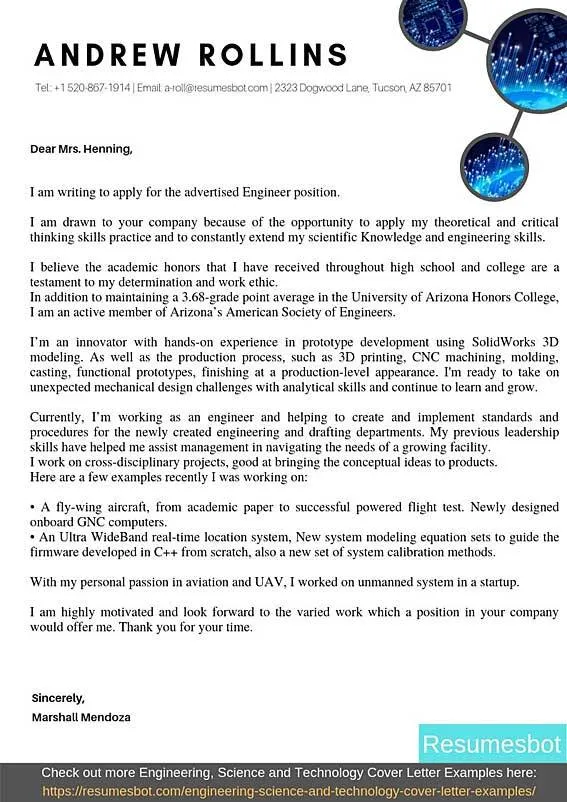Understanding the Importance of a Cover Letter for Engineer Jobs
In the competitive landscape of engineering jobs, a well-crafted cover letter is not merely a formality; it’s a critical tool for securing your dream role. It serves as your first introduction to a potential employer, allowing you to showcase your personality, passion, and suitability for the position beyond the confines of your resume. Engineering roles require a unique blend of technical expertise and soft skills, and your cover letter provides the perfect platform to highlight these qualities, making you stand out from other applicants. It’s your chance to demonstrate why you are the best fit for the specific job and company, creating a compelling narrative that piques the recruiter’s interest.
Why a Cover Letter Matters
A cover letter provides context to your resume. It allows you to explain gaps in your employment history, elaborate on projects, and express your enthusiasm for the role. Recruiters often read cover letters first to gauge a candidate’s interest and assess their writing skills. It shows you’ve taken the time to understand the company and the specific job requirements, demonstrating a level of dedication that impresses potential employers. A strong cover letter can significantly increase your chances of getting an interview, making it an essential component of any job application.
Highlighting Your Skills and Experience
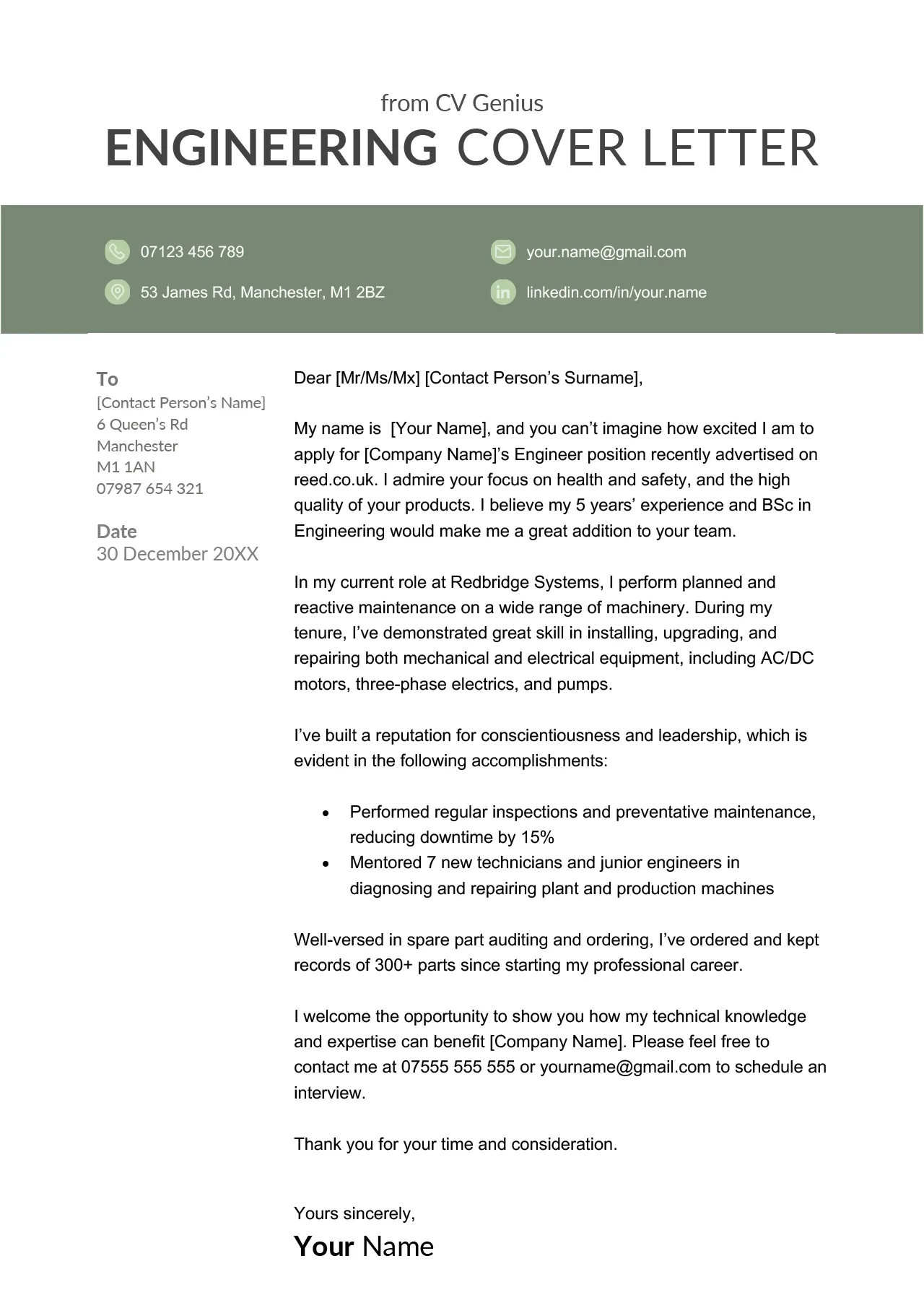
Your cover letter should strategically highlight your relevant skills and experience. While your resume provides a detailed list, the cover letter offers an opportunity to tell a story. Focus on the accomplishments that align with the job description, emphasizing your technical skills, project experience, and any specialized knowledge. Tailor your examples to demonstrate how you have successfully solved problems, improved processes, or contributed to a team’s success. Using quantifiable achievements to support your claims adds credibility and makes your application more compelling.
Key Components of a Winning Cover Letter
Contact Information and Date
Begin your cover letter with your contact information: your name, phone number, email address, and LinkedIn profile URL. This ensures that the hiring manager can easily reach you. Include the date of the application. Always address your letter to the hiring manager. If their name is not available, use a professional greeting like ‘Dear Hiring Manager’.
Professional Greeting
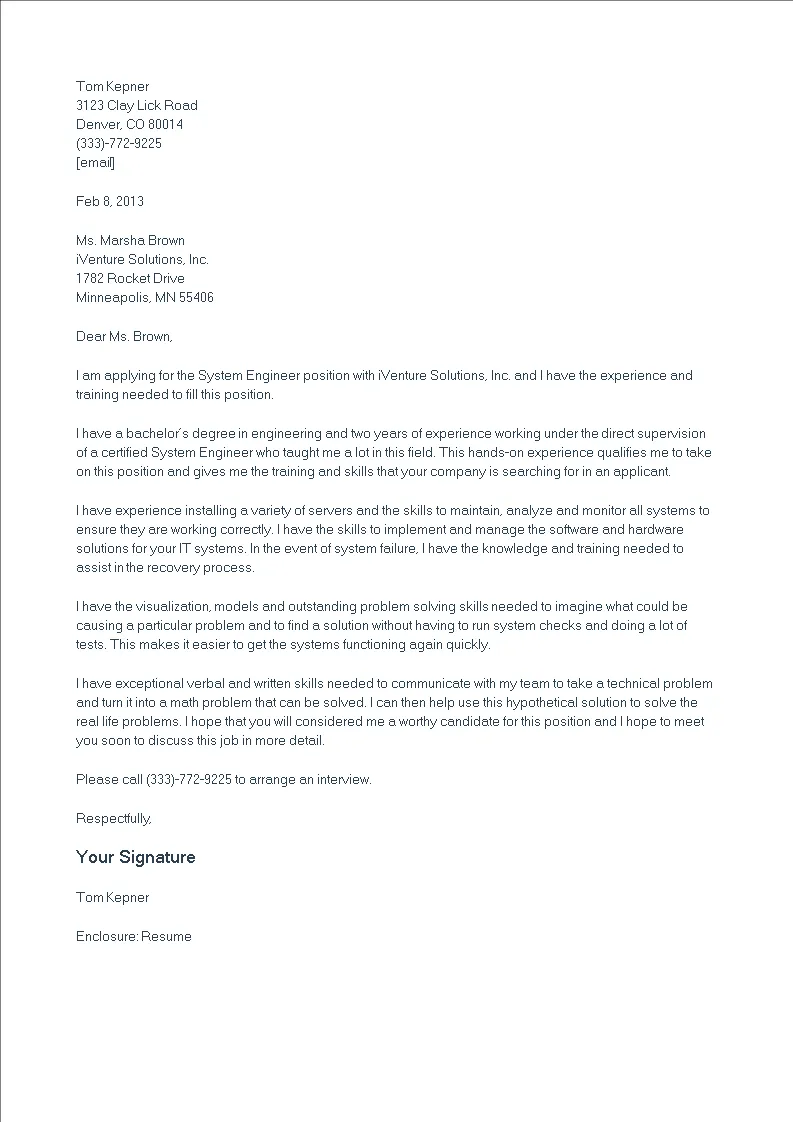
Always start with a professional greeting. If you know the hiring manager’s name, use ‘Dear Mr./Ms./Mx. [Last Name]’. If the name is unavailable, use a general greeting like ‘Dear Hiring Manager’ or ‘Dear [Company Name] Hiring Team’. Avoid generic greetings like ‘To Whom It May Concern’ or ‘Dear Sir/Madam’.
Opening Paragraph: Grabbing Attention
The opening paragraph is your first chance to make a strong impression. State the position you are applying for and how you found the job posting. Show your enthusiasm for the role and briefly mention why you are interested in the company. Consider including a compelling statement about your key skills or a brief accomplishment that immediately captures the reader’s attention. The goal is to pique their interest and make them want to read more.
Body Paragraphs: Showcasing Achievements
The body paragraphs should detail your relevant experience and achievements. Use the STAR method (Situation, Task, Action, Result) to structure your examples. Describe a situation, outline the task you were assigned, explain the action you took, and highlight the positive result. Quantify your achievements whenever possible (e.g., ‘Increased efficiency by 15%’). Focus on how your skills and experience align with the job requirements, and provide concrete examples of your accomplishments.
Quantifiable Achievements
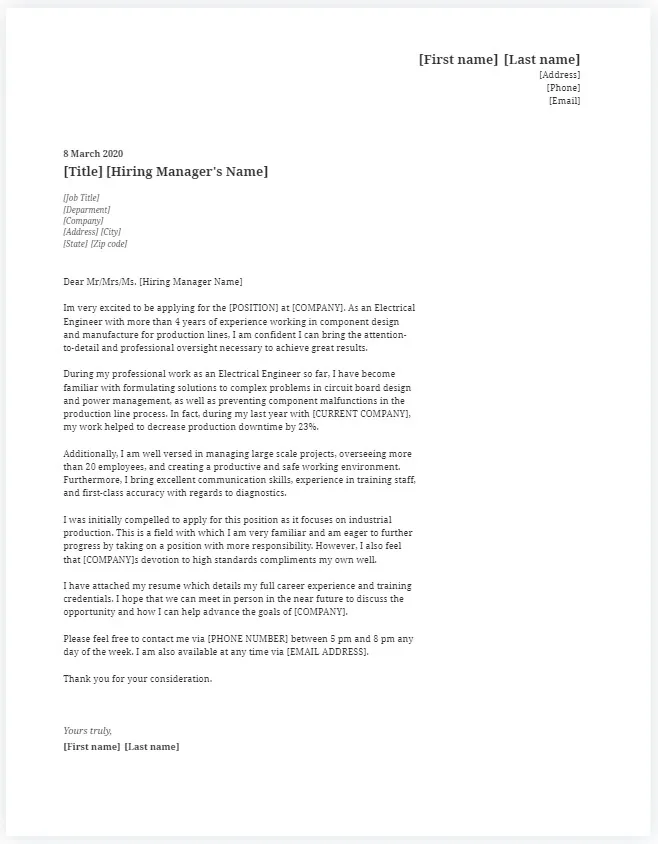
Use numbers and data to demonstrate the impact of your work. Instead of saying ‘Improved project outcomes’, say ‘Improved project outcomes by 20%’. Provide specific examples of how you have contributed to projects, solved problems, or improved processes. Quantifiable achievements make your claims more credible and show the value you can bring to the company. Use metrics and key performance indicators (KPIs) to illustrate your successes.
Tailoring Your Cover Letter
Customize your cover letter for each job application. Research the company and the specific role to understand their needs and requirements. Address the job description directly, highlighting the skills and experience that align with the advertised position. Show that you have a genuine interest in the company and how you can contribute to its goals. A generic cover letter will not make the same impact as one that is tailored to the specific job and company.
Closing Paragraph: Expressing Enthusiasm
In your closing paragraph, reiterate your interest in the position and the company. Summarize your key qualifications and emphasize your enthusiasm for the opportunity. State that you are available for an interview and are looking forward to hearing from them. Express your gratitude for their time and consideration. This is your last chance to make a positive impression, so make it count.
Formal Closing and Signature
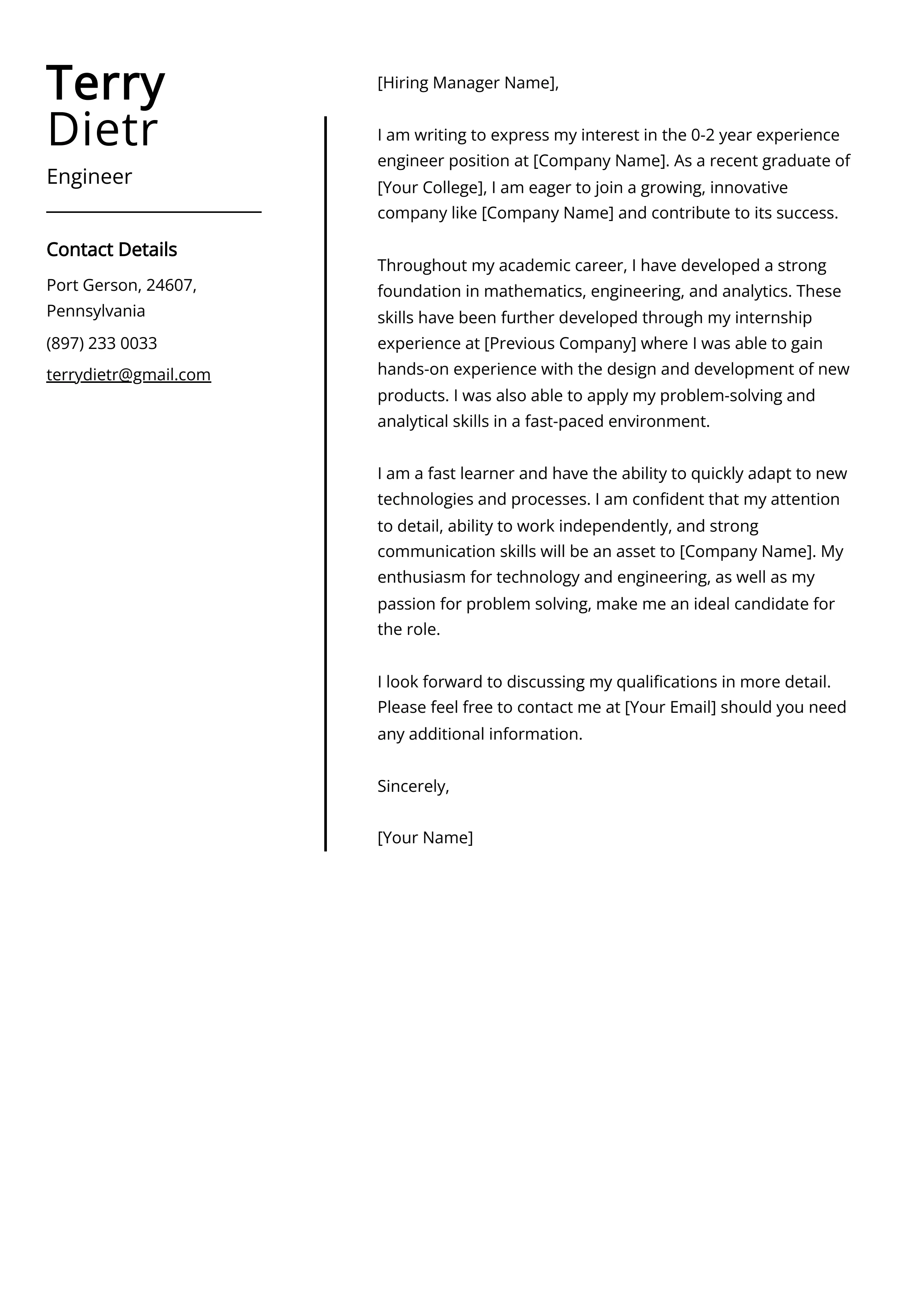
Use a professional closing such as ‘Sincerely’, ‘Best regards’, or ‘Yours sincerely’. Include your full name below the closing. If you are submitting an electronic cover letter, you can add your signature below the closing. If you’re printing the cover letter, sign your name above the typed version.
Formatting and Design for Readability
Font Choices
Choose a professional and easy-to-read font, such as Times New Roman, Arial, Calibri, or Helvetica. Keep the font size between 10 and 12 points for readability. Avoid using overly decorative or unusual fonts, as they can distract the reader and detract from the content.
Use of White Space
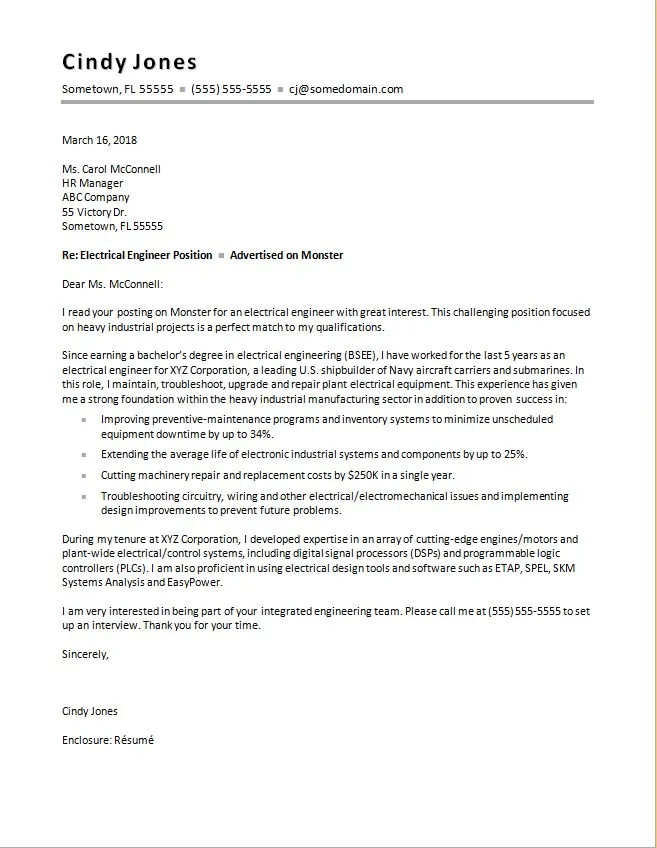
Use white space effectively to make your cover letter easy to read. Use single-spacing within paragraphs and double-spacing between paragraphs. Use adequate margins (typically 1 inch on all sides). Proper use of white space helps break up the text and make it more visually appealing.
Length Considerations
Keep your cover letter concise, ideally no longer than one page. Focus on your most relevant skills and experience. Be selective about the information you include, and avoid unnecessary details. Aim for clarity and brevity, ensuring that every sentence conveys value and purpose.
Common Mistakes to Avoid
Typos and Grammatical Errors
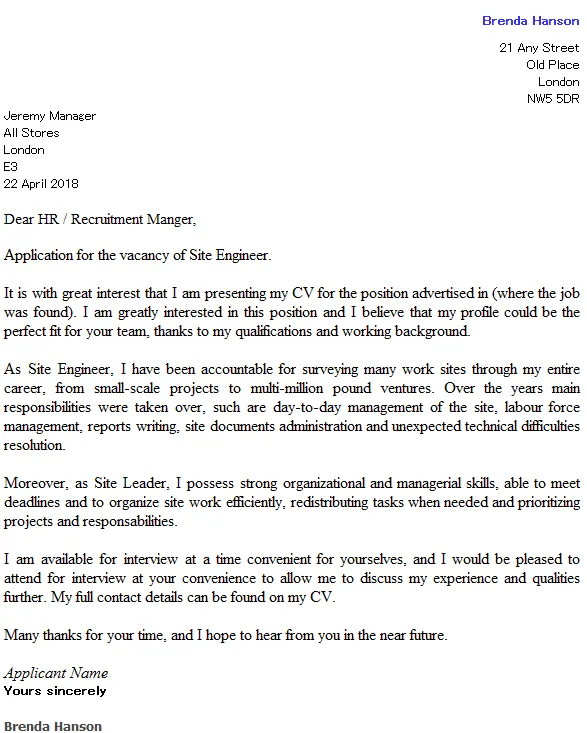
Proofread your cover letter carefully for typos, grammatical errors, and spelling mistakes. These errors can create a negative impression and suggest a lack of attention to detail. Use a spell checker and grammar checker. Ask a friend or colleague to review your cover letter for any errors you may have missed.
Generic Content
Avoid using a generic cover letter that could be sent to any company. Tailor your letter to each specific job application. Mention the company’s name, the specific job title, and highlight your understanding of their requirements. A generic cover letter shows a lack of interest and reduces your chances of getting an interview.
Focusing on Yourself Too Much
While it is essential to highlight your skills and experience, avoid focusing solely on yourself. Instead, focus on how your skills and experience align with the company’s needs. Explain how you can contribute to their goals and solve their problems. Demonstrate your understanding of the company’s mission, values, and culture.
Showcasing Your Skills and Experience
Technical Skills
In your cover letter, clearly list the technical skills relevant to the job. Include specific software, tools, and technologies you are proficient in. Provide examples of how you have used these skills in previous projects. Highlight any certifications or training you have completed. Use keywords from the job description to ensure your technical skills are easily recognized by the hiring manager.
Soft Skills
In addition to technical skills, showcase your soft skills, such as communication, teamwork, problem-solving, and leadership. Provide examples of how you have used these skills in previous roles. Demonstrate your ability to work collaboratively, manage projects, and communicate effectively. Soft skills are essential for success in engineering roles and can set you apart from other candidates.
Project Experience
Detail your project experience, including the scope, your role, and the results. Use the STAR method to describe your contributions and achievements. Provide specific examples of how you have successfully completed projects, overcome challenges, and delivered positive outcomes. Quantify your results whenever possible. Highlight any awards, recognitions, or publications related to your projects.
Tailoring Your Letter to the Job Description
Keywords and Phrases
Carefully review the job description and identify the keywords and phrases used to describe the required skills and experience. Incorporate these keywords into your cover letter to demonstrate your qualifications. Use the same language as the job description to align your skills and qualifications with the employer’s needs. This helps ensure your application gets past applicant tracking systems (ATS).
Matching Skills to Requirements
Explicitly match your skills and experience to the requirements listed in the job description. Provide specific examples of how you have demonstrated each required skill in previous roles. Address any gaps in your experience by highlighting transferable skills or relevant training. Show the hiring manager that you have the necessary qualifications to succeed in the role.
Call to Action and Following Up
Expressing Interest and Availability
In your closing paragraph, clearly express your interest in the position and your availability for an interview. State that you are excited about the opportunity and eager to discuss your qualifications further. Provide your contact information again and reiterate your willingness to provide any additional information. This helps the hiring manager know how to proceed and signals your enthusiasm.
Following Up on Your Application
Follow up on your application after a reasonable period, typically one to two weeks after submitting your cover letter and resume. Send a polite email to the hiring manager expressing your continued interest in the position. Briefly restate your qualifications and reiterate your availability for an interview. Following up shows your initiative and demonstrates your commitment to the job.
